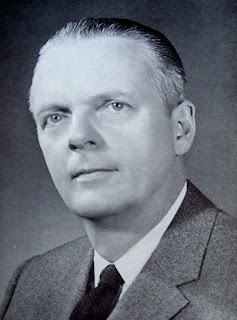 |
| convicted, sentenced to 7 years |
Governor Stevenson, served as a deputy commissioner in the US Court of Military appeals.
In 1968 he served as head of a study team for the National Commission on the Causes and Prevention of Violence, looking into the messy violence surrounding the 1968 Democratic National Convention. His report was critical of the Chicago Police Department and earned him the lasting enmity of Mayor Daley. Later as candidate for governor in 1972 he won the Democratic nomination over the Daley and the Chicago Machine favorite, Lt. Gov. Paul Simon. During his campaign he hit upon the gimmick of walking around the state, covering over 1000 miles during his campaign. He was elected governor, defeating Richard B. Ogilvie by 51 to 49%.
As Governor he clashed with both the Chicago Democratic machine and Republicans in the state. Nevertheless he instituted some reforms against certain corrupt practices and passed a campaign finance disclosure law. He was defeated in the state primary in 1976, and left office in 1977.
In 1980 he started a chain of oil change shops and bought two troubled Savings and Loans Associations. As owner of one of these banks, he committed bank fraud by borrowing $45,000 from a borrower from his bank. He subsequently pleaded guilty to bank fraud, perjury, and filing false financial statements and was sentenced to 7 years in federal prison in 1987. After 18 months Walker was released from prison in 1989.
He later went on to become an author, writing about early Church history, San Diego History, and his memoirs of his time in Illinois state politics. He now lives in Rosarito, Baja California in Mexico.
-----------------------------------------------------------------------------
James Robert Thompson, Jr. (1977-1991) Republican
Thompson was born in 1936 in Chicago. He attended the University of Illinois-Chicago, and Washington University in St. Louis. He earned his law degree from Northwestern in 1959. He served for the Cook County state's attorney, taught at Northwestern Law School, and became a US attorney for the Northern District of Illinois in the early 1970s. It was as a federal prosecutor that he succeeded in convicting former Governor Otto Kerner Jr. for influence peddling in connection with the racetrack industry. He also succeeded in gaining convictions of some of Mayor Richard J. Daley's top aides as well as some prominent Republicans in Cook County.
In 1976 Thompson was elected governor with an overwhelming plurality. At this time the terms of governor were adjusted to fall on non-Presidential election years, so his first term was only for two years. He beat Michael Bakalis two years later for a second full 4 year term, and then defeated former senator Adlai Stevenson iii, son of the former governor twice in 1980 and 1984.
After leaving office in 1991 he joined and later headed the law firm of Winston and Strawn. As part of that law firm he has focused on corporate law and government relations, as well as defending former Governor George Ryan in the "licenses for bribes" scandal.
He served on the 9/11 Commission in from 2002-2004, when the commission released its report.
-------------------------------------------------------------------------------
James Edgar (1991-1999), Republican
 |
| called to testify |
Citing health problems, specifically his heart surgery, he has stayed out of politics since leaving office as governor. For example, although he was thought to have been a strong candidate for US Senator he chose not to run for the seat that Barack Obama won in 2006.
-----------------------------------------------------------------------------



















